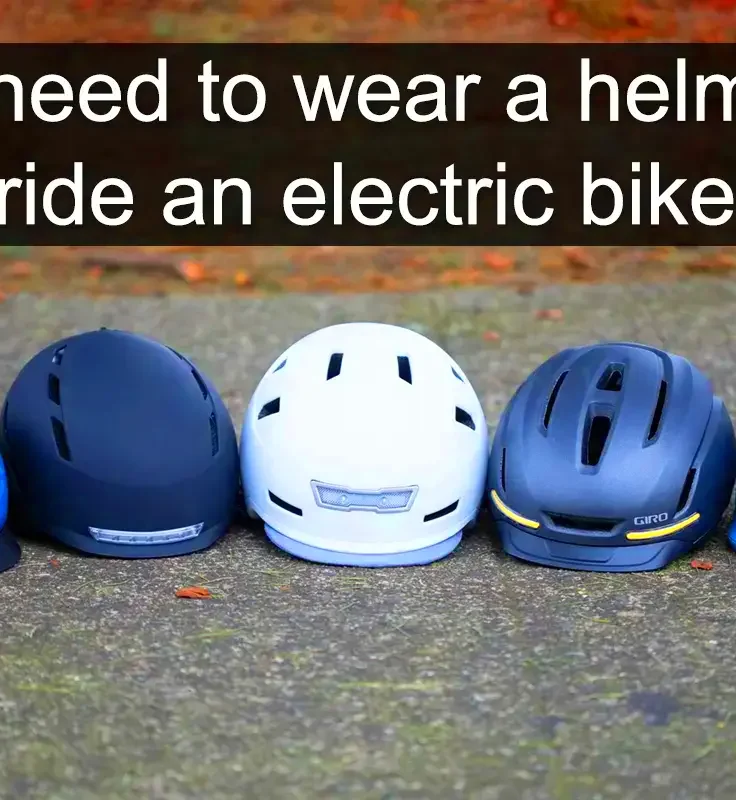Electric Bike Helmet Laws Explained
Electric bikes, also known as e-bikes, are gaining popularity as a convenient and eco-friendly mode of transportation. With their growing use, many regions have introduced specific laws related to safety, especially concerning helmet use. Electric bike helmet laws are in place to protect riders from potential injuries. These laws can vary depending on the region and the type of e-bike being used. Understanding these laws is crucial for every e-bike rider to ensure safety and legal compliance.
Why Helmet Laws are Important for Electric Bike Riders
Helmet laws are critical for electric bike riders because e-bikes can reach higher speeds than traditional bicycles. This increase in speed elevates the risk of injury in case of accidents. Helmets are designed to reduce the impact on a rider’s head during a collision, significantly lowering the chances of severe head trauma.
Some key reasons helmet laws are essential for e-bike riders include:
- Increased protection: Helmets provide a cushion to the head, protecting against injuries that could otherwise be fatal.
- Higher speed risks: E-bikes often travel faster than regular bikes, making falls or crashes more dangerous.
- Legal and insurance coverage: Adhering to helmet laws may also be necessary for insurance claims and legal disputes following an accident.
In short, helmet laws ensure that riders have the best possible protection while enjoying their electric bikes, making every ride safer and more responsible.
Helmet Laws for Electric Bikes in Different Regions
Helmet laws for electric bikes differ from region to region, depending on local traffic regulations and how electric bikes are classified. In some areas, e-bikes are considered motorized vehicles, and riders must adhere to stricter helmet laws. In other regions, they are treated like traditional bicycles, resulting in more relaxed regulations.
Here is a general overview of how different regions handle helmet laws for electric bikes:
| Region | Helmet Requirement |
|---|---|
| United States | Varies by state, but generally required for riders under 18 |
| European Union | Mandatory for e-bikes over 25 km/h |
| Australia | Mandatory for all e-bike riders |
| Canada | Depends on province, typically required for riders under 18 |
It’s essential to check local regulations before riding to ensure you’re following the law and staying safe on the road.
Age Restrictions and Helmet Requirements
Age restrictions for electric bike riders often play a significant role in helmet requirements. Many regions have specific rules that mandate helmet use based on the rider’s age, with younger riders typically facing stricter laws. These rules are in place because younger individuals are more vulnerable to injury, and helmets provide them with additional protection.
Common age-related helmet requirements include:
- Under 18: In most areas, riders under 18 are required to wear helmets while riding electric bikes, regardless of the bike’s speed or power. This is due to their increased susceptibility to injury.
- 18 and above: Some regions allow adults to decide whether or not to wear helmets, although it is still highly recommended for safety purposes. However, in certain high-speed electric bike categories, even adults are required to wear helmets.
- E-bike classifications: In some areas, different types of e-bikes (e.g., pedal-assist vs. throttle-based) have distinct helmet rules. For example, Class 3 e-bikes, which are faster, often have more stringent helmet laws, regardless of the rider’s age.
Before hopping on an e-bike, it’s important to know the age-specific helmet regulations in your area to avoid fines and stay safe. Whether you’re young or older, helmets provide essential protection in case of accidents.
Penalties for Violating Electric Bike Helmet Laws
Failing to comply with electric bike helmet laws can lead to various penalties, depending on local regulations. Penalties are often designed to encourage safety and adherence to the law, and they can range from monetary fines to more severe consequences. Understanding these penalties can help riders avoid unnecessary trouble.
Common penalties for violating helmet laws include:
- Fines: The most typical consequence is a fine, which can vary from small amounts (around $25 to $50) to higher sums in regions with stricter enforcement.
- Increased fines for repeated offenses: In some areas, repeated violations can lead to larger fines, as authorities attempt to enforce helmet safety more seriously.
- Points on driving record: Some jurisdictions may assign points to your driving record if you violate e-bike helmet laws, especially in places where e-bikes are treated like motor vehicles.
- Legal issues after accidents: If involved in an accident while not wearing a helmet, you may face increased liability or difficulty with insurance claims, especially if helmet use is mandated by law in your area.
Staying informed about helmet laws and penalties not only helps you avoid fines but also keeps you safer on the road.
How Helmet Laws Impact Electric Bike Safety
Helmet laws are implemented to enhance the overall safety of electric bike riders. By requiring the use of helmets, these laws significantly reduce the risk of head injuries in accidents, which can be life-threatening without proper protection. Studies show that helmeted riders are far less likely to suffer severe head trauma in the event of a crash, making these laws an essential part of public safety measures.
The impact of helmet laws on electric bike safety includes:
- Reduction in head injuries: Helmets can absorb the impact during a fall or collision, reducing the chances of serious injury.
- Encouragement of safer riding behavior: Riders who know they are required to wear helmets are more likely to engage in cautious riding, especially in high-traffic areas.
- Increase in public awareness: Helmet laws often come with educational campaigns, helping to inform the public about the importance of safety gear when riding e-bikes.
By promoting safer riding habits and providing physical protection, helmet laws have a direct and positive effect on the safety of electric bike riders.
Common Misunderstandings about Electric Bike Helmet Laws
Despite the clarity of electric bike helmet laws, many misconceptions still circulate, leading to confusion among riders. These misunderstandings can cause riders to unknowingly violate the law or fail to take proper safety precautions. It’s important to clear up these myths to ensure compliance and safety.
Some common misunderstandings include:
- “Helmets are only required for kids”: While many regions do have age-specific rules, certain types of electric bikes, especially faster models, require all riders to wear helmets regardless of age.
- “If I’m riding slowly, I don’t need a helmet”: The risk of an accident exists even at low speeds, and helmets can provide vital protection in any collision, no matter the speed.
- “E-bikes are the same as regular bicycles”: Some people think e-bikes follow the same laws as traditional bicycles, but because of their higher speeds, they often have different regulations, including stricter helmet requirements.
- “Once I’m on a bike path, helmets aren’t necessary”: Even on designated bike paths, many regions still require helmet use, especially for higher-powered e-bikes.
Understanding the truth behind these misconceptions can help riders stay safe and avoid penalties. Always check local laws to ensure you’re following the correct rules.
FAQ about Electric Bike Helmet Laws
Q: Do all electric bike riders need to wear helmets?
A: No, not all riders are required to wear helmets. However, helmet laws vary by region and the type of electric bike, so it’s essential to know the rules in your area. Typically, riders under a certain age (often 18) and those on faster e-bikes are required to wear helmets.
Q: What type of helmet should I use on an electric bike?
A: Most regions require riders to wear helmets that meet certain safety standards, like those certified by organizations such as the CPSC (Consumer Product Safety Commission). Some areas may also require more robust helmets for higher-speed electric bikes.
Q: Are there different helmet laws for different classes of e-bikes?
A: Yes, in many regions, helmet laws are stricter for Class 3 electric bikes (which have higher speeds) compared to Class 1 or Class 2 bikes. Always check the classification of your bike and the corresponding regulations.
Q: What happens if I don’t wear a helmet when required?
A: Penalties for not wearing a helmet can include fines, points on your driving record, or other legal consequences, depending on where you are riding. It’s always safer and smarter to wear a helmet, even if not strictly required.
Conclusion on Electric Bike Helmet Laws
Electric bike helmet laws are designed to protect riders and reduce the risk of serious injury. Whether you’re riding a low-speed e-bike or a high-speed model, wearing a helmet provides an extra layer of safety that can save your life in the event of an accident. Laws regarding helmets can vary widely by region and bike type, so it’s important to stay informed about the rules where you live.
Even if local laws do not require a helmet, it’s always a good idea to wear one. Helmets not only protect you from head injuries but also encourage safer riding practices. By following helmet laws and using the right safety gear, you can enjoy your electric bike with confidence and peace of mind.


